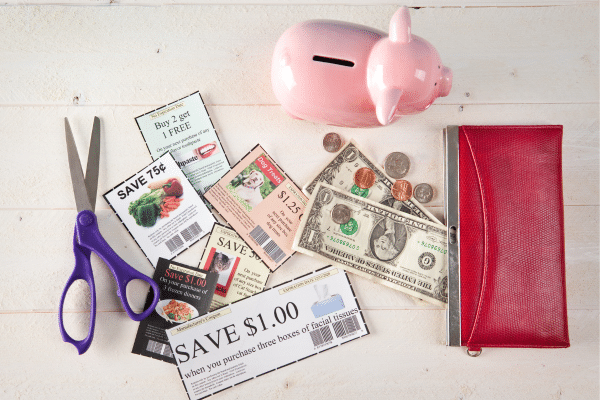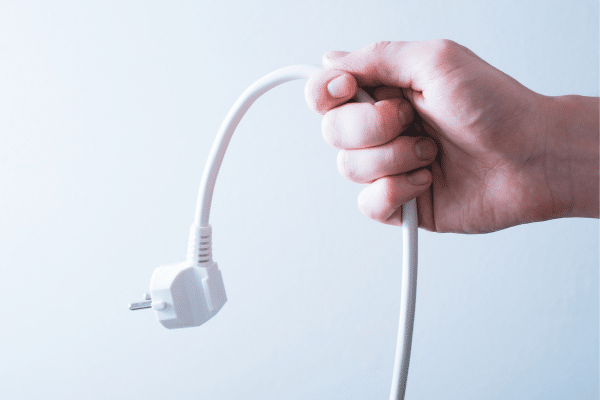In today’s consumer-driven society, it’s easy to overlook the small habits that might be siphoning off hard-earned cash. Yet, it’s often the most unassuming actions that, when accumulated, can lead to substantial savings over time. Cultivating a proactive mindset and a keen awareness of daily spending habits can pave the way for financial prosperity. By mastering a few simple tactics, anyone can harness the potential to save significantly without feeling deprived or making radical lifestyle changes.
Contents
Use Coupons

The digital age has transformed the art of couponing. Gone are the days when scouring newspapers was the only way to find a discount. Now, myriad online platforms and mobile apps offer coupons tailored to individual shopping habits. By taking a few minutes each week to browse these resources, potential savings can be significant. Moreover, pairing coupons with existing sales or loyalty programs can compound the benefits. A little time invested in seeking out these discounts can, over months, amount to hundreds of dollars saved.
It’s not just about the thrill of getting a discount; it’s about smart spending. For instance, consider a regular grocery shopper who saves an average of $10 per week using coupons. That’s a potential saving of $520 annually. When applied across various purchasing habits, from dining to shopping for clothing, the cumulative effect can be astonishing. The key lies in consistency and making couponing a regular part of one’s shopping routine.
Cancel Unnecessary Subscriptions

Subscriptions can be insidious. What starts as a small monthly fee for a streaming service or a magazine can quickly multiply as more services are added. It becomes particularly burdensome when many of these services remain unused or underutilized. By conducting a monthly or quarterly review of all active subscriptions, one can identify which services are truly valuable. Removing even one or two unnecessary subscriptions can free up funds that can be better utilized or saved.
Another aspect to consider is the allure of free trials. They’re enticing, offering a glimpse of a service for a limited time. However, these trials often automatically convert into paid subscriptions. It’s essential to set reminders to evaluate these services before the trial ends. By being proactive in managing subscriptions and ensuring only the most valued remain active, it’s possible to sidestep the trap of passive monthly expenditures.
Limit Eating Out

Dining at restaurants or grabbing takeout frequently might seem harmless, especially when considering the convenience and variety it offers. However, these costs can quickly accumulate. A meal that costs $20 at a restaurant could potentially be made at home for a fraction of that price. By limiting dining out to special occasions or treats, and embracing home-cooked meals, it’s possible to witness substantial savings over the course of a year.
Preparing meals at home also offers another advantage: complete control over ingredients and portion sizes. This not only allows for healthier eating habits but also provides an opportunity to buy ingredients in bulk or on sale. Creating a weekly meal plan, trying out new recipes, and storing leftovers for future meals can make the transition to home-cooked meals more enticing and cost-effective.
Unplug Electronics

Many are unaware that electronics can consume energy even when they’re turned off. This phenomenon, often referred to as “phantom” or “standby” energy, can be a silent cost inflator on electricity bills. Simple actions, such as unplugging chargers that aren’t in use or using power strips to turn off multiple devices at once, can help mitigate these costs. Over time, these tiny adjustments can lead to noticeable reductions in electricity consumption and expenses.
Additionally, investing in energy-efficient appliances and devices can provide long-term savings. While the upfront cost might be slightly higher, the reduction in energy consumption can make up for the initial expense over the device’s lifespan. Being conscious of energy usage habits and making informed purchasing decisions can go a long way in optimizing savings in the realm of electricity.
Buy In Bulk

Purchasing items in bulk is a strategy that offers dual benefits: not only does it generally reduce the cost per unit, but it also minimizes the frequency of shopping trips. Items like grains, pasta, and household essentials often have a lower price per unit when bought in larger quantities. By allocating storage space and organizing effectively, bulk purchases can lead to consistent, long-term savings.
However, it’s crucial to differentiate between buying in bulk for genuine savings and unnecessary hoarding. Purchasing large quantities of perishable items without a plan for their use can lead to waste. But with careful planning and a focus on staple items with a longer shelf life, the bulk buying approach can be both a time-saver and a significant contributor to financial well-being.
Implement DIY Solutions

Many people often turn to professionals for tasks that could be accomplished with a bit of research and effort. Whether it’s home repairs, crafting, or even some beauty treatments, taking a DIY approach can offer substantial savings. The internet is teeming with tutorials, guides, and forums that provide step-by-step instructions for a myriad of projects. Tackling these tasks personally not only saves money but also imparts a sense of accomplishment.
It’s also beneficial to learn basic maintenance skills, whether it’s for vehicles, home appliances, or garden upkeep. Routine maintenance can extend the life of products, preventing the need for costly replacements or repairs. Over time, the savings from these DIY efforts can be significant, particularly when considering the high costs often associated with professional services.
Shop Secondhand

The secondhand market has grown exponentially in recent years, with platforms making it easier than ever to buy and sell gently used items. Opting for secondhand items, from clothing to electronics, can result in acquiring quality goods at a fraction of the original price. Moreover, vintage and unique items can often be found, adding a touch of individuality that new purchases might not provide.
Safety and quality assurance are paramount when shopping secondhand. It’s advisable to inspect items thoroughly, verify authenticity, and ensure that electronics or appliances are in working condition. By being diligent and informed, shopping secondhand can become a regular practice that results in both eco-friendly choices and impressive savings.
The Bottom Line
Adopting savvy financial habits doesn’t necessitate a complete lifestyle overhaul. Instead, by making informed, conscious decisions in daily activities, the potential for substantial savings emerges. From the kitchen to the shopping cart, opportunities abound to cut costs without compromising quality or enjoyment. The journey to financial well-being often begins with recognizing these opportunities and seizing them with both hands.



